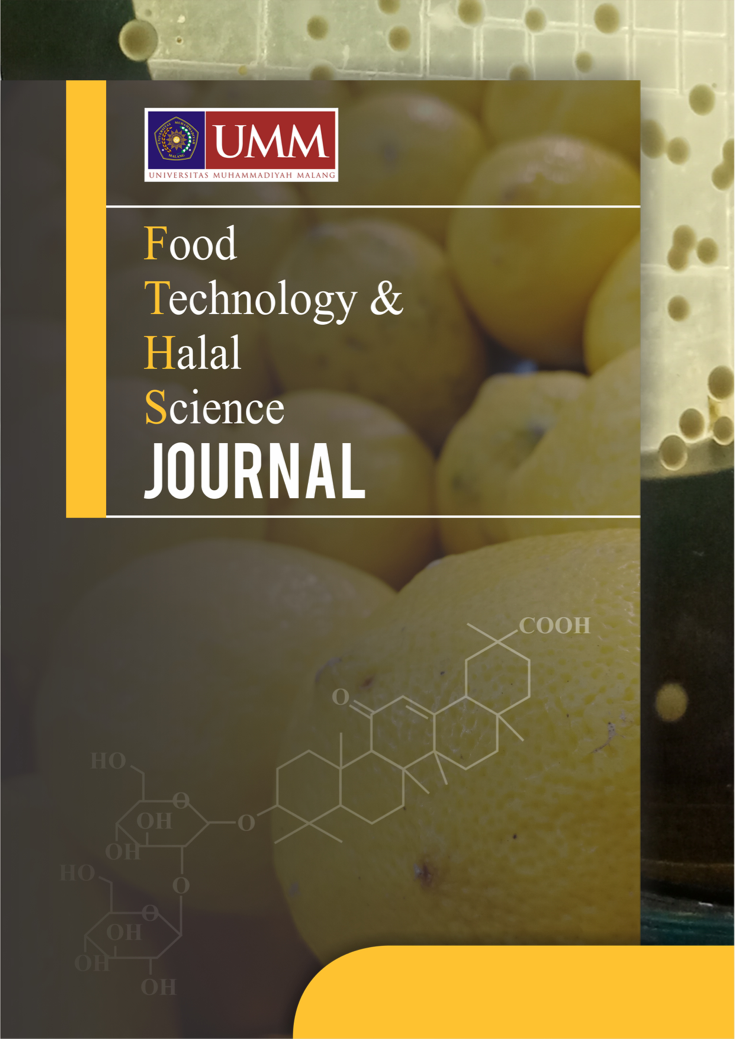Study of utilization three varieties of mango and concentration of apple vinegar towards physicochemical characteristics of mango chutney
DOI:
https://doi.org/10.22219/fths.v1i1.7542Keywords:
chutney, mango, apple vinegarAbstract
Abstract. Chutney is a native Indian processed product, made from cuts of fruits or vegetables and nuts cooked in a sweet, sour and spice mixture. The quality requirements of chutney are influenced by the use of raw materials herbs and spices. The purpose of this study was to determine the response of three varieties of mango and its interaction with concentration of apple vinegar towards physicochemical characteristics of mango chutney. The experimental design of this study used a nested design with two factors. The first factor was three varieties of mango consisting of podang mango, gadung, and kweni and the second factor was the concentration of apple vinegar (5%: 10%: 15%).Parameters analyzed were moisture content, ash content, vitamin C, total soluble solids, total titrated acids, pH, crude fiber, antioxidant activity, color intensity, topicality and hedonic test (flavor, aroma, and appearance). The study showed that differences in mango varieties and apple vinegar concentration did not interact with moisture content, ash content, total soluble solids, total titrated acids, vitamin C, crude fiber, antioxidant activity, pH, color intensity, topicality and hedonic test. The differences in mango varieties significantly affected on water content, color intensity (L and a+), topicality, and hedonic test, whereas the difference of apple vinegar concentration had no significant effect on ash content, pH, total soluble solids, total titrated acids, vitamin C, crude fiber, and antioxidant activity. The optimum composition based on De Garmo test chutney made from gadung mango and 5% apple vinegar (G2C1) with moisture content 23,50 %, ash content 3,15 % vitamin C 0,10 %, total titrated acid 0,75 %, crude fiber 7,05 %, total soluble solids 4,60 ºbrix, ph 4,31 %, antioxidant activity 93,67 %, colour intensity: lightness (L) 36,13, redness (a+ ) 4,67 and yellowness ( b+) 10,00, Topicality 10,67 cm, and hedonic test : appearance 2,13 %, aroma 3,30 % and flavor 2,97 %.
Downloads
Downloads
Published
How to Cite
Issue
Section
License
Authors who publish with this journal agree to the following terms:
- Authors retain copyright and grant the journal right of first publication with the work simultaneously licensed under a Creative Commons Attribution License that allows others to share the work with an acknowledgement of the work's authorship and initial publication in this journal.
- Authors are able to enter into separate, additional contractual arrangements for the non-exclusive distribution of the journal's published version of the work (e.g., post it to an institutional repository or publish it in a book), with an acknowledgement of its initial publication in this journal.
- Authors are permitted and encouraged to post their work online (e.g., in institutional repositories or on their website) prior to and during the submission process, as it can lead to productive exchanges, as well as earlier and greater citation of published work (See The Effect of Open Access).










